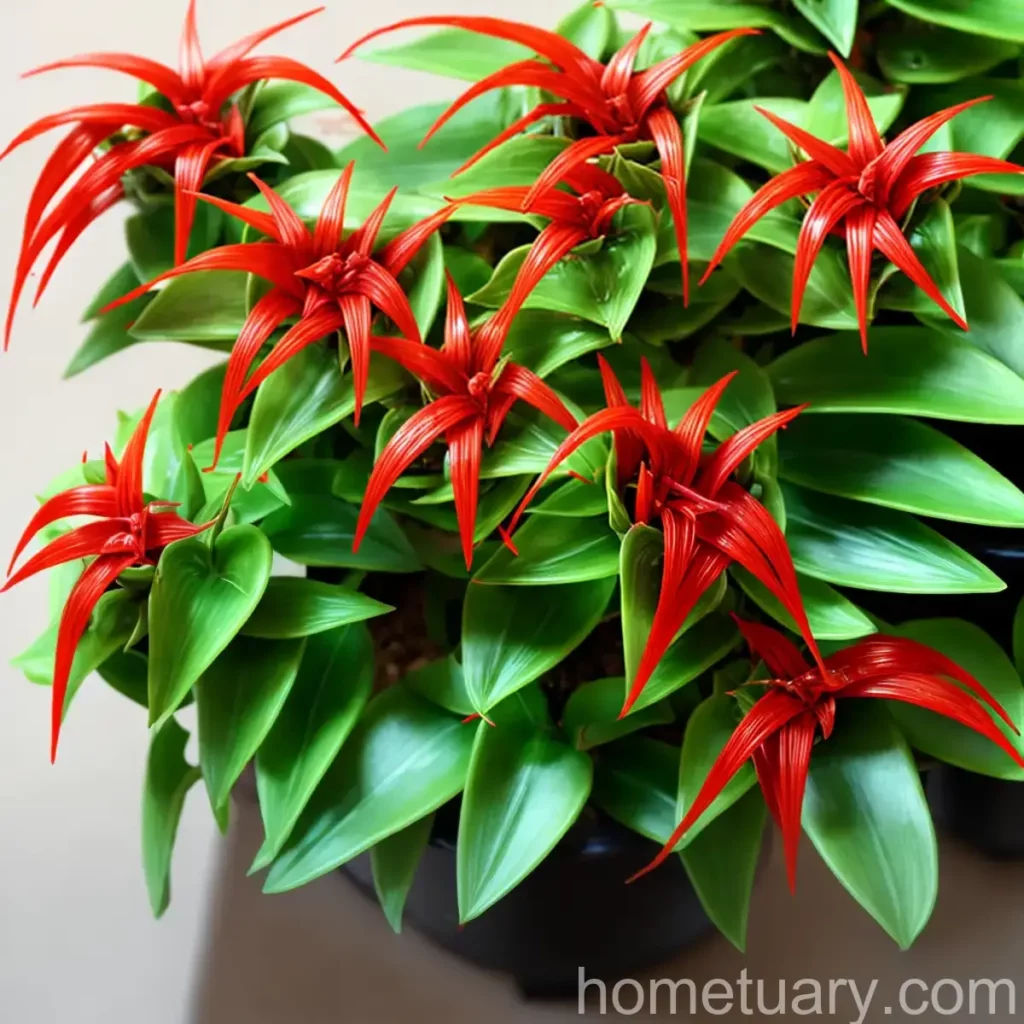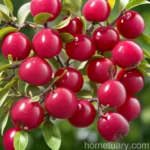The Lipstick Plant (Aeschynanthus radicans): A Comprehensive Guide
It’s time to delve into the world of the lipstick plant (Aeschynanthus radicans), a delightful and vibrant species that has captivated plant enthusiasts around the globe. This comprehensive guide will equip you with the knowledge and skills to cultivate these beautiful plants with confidence and success.
What is a Lipstick Plant (Aeschynanthus radicans)?
The lipstick plant, scientifically known as Aeschynanthus radicans, is a tropical epiphytic vine in the Gesneriaceae family. This evergreen plant is native to regions in Southeast Asia, including Malaysia, Indonesia, and the Philippines. The name “lipstick plant” is derived from the striking tubular flowers that resemble tiny tubes of lipstick.
The Aeschynanthus radicans is esteemed for its lush, glossy foliage and vibrant, eye-catching blooms, making it a popular choice for indoor cultivation. With proper care and favorable conditions, these plants can thrive and adorn indoor spaces with their ornamental beauty.
Key Takeaways – Lipstick Plant (Aeschynanthus radicans)
Culture
- Origin: Southeast Asia (Malaysia, Indonesia, Philippines)
- Family: Gesneriaceae
- Common Names: Lipstick Plant, Lipstick Vine
- Botanical Name: Aeschynanthus radicans
- Growth Habit: Epiphytic vine
- Foliage: Lush and glossy
- Flowers: Tubular, bright red or orange
Uses
- Ornamental plant for indoor spaces
- Decoration for hanging baskets and containers
- Air-purifying qualities
Now, let’s delve into the specific care requirements for the lipstick plant, covering essential aspects such as water, sunlight, fertilizer, soil, pruning, propagation, and container cultivation.
Water
Proper watering is essential for the health and vitality of the lipstick plant. It’s crucial to maintain a balanced approach to watering to prevent issues such as root rot or dehydration.
Lipstick Plant Water Requirements:
- Watering Frequency: During the growing season (spring and summer), water the plant when the top inch of the soil feels dry. In winter, reduce watering but ensure the soil doesn’t completely dry out.
- Watering Technique: Water the plant thoroughly, allowing excess water to drain from the bottom of the pot. Discard any excess water to prevent waterlogging.
Sunlight
Adequate sunlight is crucial for the growth and flowering of the lipstick plant. However, the plant also benefits from some protection against intense, direct sunlight, particularly during the hottest part of the day.
Aeschynanthus radicans Sunlight Needs:
- Light Exposure: Provide bright, indirect light for the plant. A location with eastern or western exposure is ideal, as it allows the plant to receive bright light without direct sun exposure during peak hours.
Fertilizer
Proper fertilization supports the growth and flowering of the lipstick plant, providing essential nutrients for its overall health and vigor.
Lipstick Plant Fertilizer:
- Frequency: Apply a balanced, water-soluble fertilizer every 2-4 weeks during the growing season. Reduce or suspend fertilization in winter when growth slows down.
- Dilution: Follow the manufacturer’s instructions for diluting the fertilizer to avoid overfeeding.
Soil
The right potting medium is pivotal in providing the necessary support and nutrients for the lipstick plant’s growth.
Aeschynanthus radicans Potting Soil:
- Type: Use a well-draining, aerated potting mix rich in organic matter. A commercial mix specifically formulated for epiphytic plants or African violets can be suitable.
- Additives: Consider incorporating perlite or coarse sand to improve drainage and aeration.
Pruning
Pruning helps maintain the lipstick plant’s shape, control its size, and encourage bushier growth and prolific flowering.
Lipstick Vine Pruning:
- Timing: Prune the plant in early spring before the growing season begins.
- Technique: Remove leggy or overgrown stems to promote compact growth. Pinch off spent flowers to stimulate additional blooms.
Propagation
The ability to propagate the lipstick plant allows enthusiasts to create new plants and expand their collection as desired.
Propagating Lipstick Vine:
- Method: Propagate the plant through stem cuttings. Select a healthy stem with several leaf nodes, and place it in a suitable propagation medium such as a mix of perlite and peat moss.
- Conditions: Provide warmth and high humidity to encourage successful rooting.
Container Cultivation
Growing the lipstick plant in containers allows for versatile placement and display options, making it a popular choice for indoor cultivation.
Lipstick Plant Container:
- Type: Choose a well-draining, sturdy pot with adequate drainage holes to prevent waterlogging.
- Size: Select a container that accommodates the plant’s current size, with minimal extra space to prevent excessive moisture retention in the soil.
Popularity
The lipstick plant has garnered popularity among indoor plant enthusiasts and collectors due to its striking flowers, lush foliage, and relatively low maintenance requirements.
Common Diseases
While the lipstick plant is generally resilient, it can be susceptible to certain diseases if its care requirements are not adequately met.
Disease Diagnosis:
- Root Rot: Overwatering or inadequate drainage can lead to root rot. Symptoms include wilting, yellowing leaves, and a foul odor from the soil.
- Powdery Mildew: A fungal infection that presents as a powdery, white substance on the plant’s leaves and stems.
Common Pests
Pests can pose a threat to the health and appearance of the lipstick plant if not promptly addressed.
Lipstick Plant Pests:
- Aphids: These tiny, sap-sucking insects can cluster on the plant’s tender growth, leading to stunted or distorted leaves.
- Mealybugs: Small, cottony pests that feed on the plant’s sap and can cause leaf yellowing and overall decline.
Botanist’s Tips
- Monitor the plant’s watering needs closely, adjusting the frequency based on environmental factors and seasonal changes.
- Regularly inspect the plant for any signs of pest infestation or disease, addressing issues promptly to prevent spread.
- Encourage a humid environment by misting the plant’s foliage or using a humidifier, especially during dry periods.
Fun Facts
- The lipstick plant’s flowers are often pollinated by sunbirds in their native habitats due to the shape and nectar content of the blooms.
- The plant’s striking flowers and trailing growth make it a popular choice for hanging baskets and elevated displays.
Now that we’ve delved into the essentials of caring for the lipstick plant, let’s explore additional resources and information to support your journey in cultivating and enjoying these captivating plants.
Links to External Resources
- Aeschynanthus radicans Care and Cultivation Guide
- Lipstick Plant – Growing and Care Guide
- Lipstick Plant Propagation: A Step-by-Step Guide
- Caring for Lipstick Vine Plants Indoors
- Lipstick Plant: Pests and Diseases Control
With this comprehensive guide and the additional resources provided, you are well-equipped to embark on an enriching journey of cultivating, nurturing, and savoring the beauty of the lipstick plant. Whether you’re a seasoned plant enthusiast or a beginner in the world of indoor gardening, the captivating allure of the Aeschynanthus radicans is sure to add vibrancy and elegance to your botanical collection.















